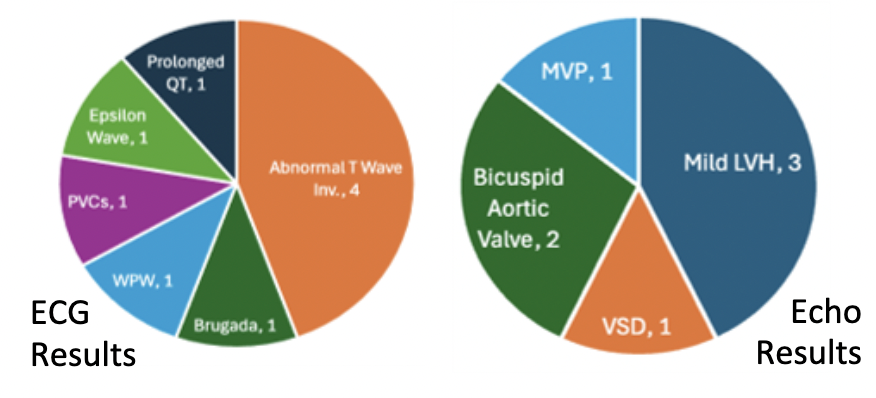Cardiology 3
Session: Cardiology 3
164 - Cost-Effectiveness of Cardiovascular Screening for Prevention of Sudden Cardiac Arrest in High School Athletes
Friday, April 25, 2025
5:30pm - 7:45pm HST
Publication Number: 164.4460
ABBEY J. SANTANELLO, NORTHWELL, Brooklyn, NY, United States
- AS
ABBEY J. SANTANELLO, D.O. (she/her/hers)
Resident
NORTHWELL
Brooklyn, New York, United States
Presenting Author(s)
Background: Sudden cardiac death (SCD) is rare, but each death has a significant impact on the victim’s family and community. Pre-participation physical evaluation is a critical step in preventing SCD, but studies indicate that proper screening is infrequently performed. The inclusion of electrocardiogram (ECG) and/or focused echocardiogram in screening is controversial. The purpose of this study is to determine the value of integrating ECG and echocardiography with cardiac-focused history for screening.
Objective: The purpose of this study is to determine the clinical value and cost-effectiveness of integrating 12-lead ECG and echocardiography with cardiac focused history for pre-participation screening.
Design/Methods: Heart screening was offered to all athletes at 7 different high schools across Staten Island. Participation was optional and required parental consent. Athletes were asked to complete a brief questionnaire inquiring about the history of cardiac symptoms, known physical exam abnormalities, and family history of heart conditions. Each screening included a 12-lead ECG and focused echocardiogram to evaluate conditions associated with SCD.
Results: Among 318 athletes screened, 12 (4%) reported symptoms and 19 (6%) reported a family history of a high-risk heart condition. Abnormalities were identified in 16 (5%) students, and further evaluation was recommended in all cases. In recent literature, the average costs of ECG and echocardiogram are $50 and $350, respectively. ECG alone is a simple and low-cost modality that is usually abnormal when an underlying condition associated with SCD is present. However, in this study, ECG identified only 56% of cardiac abnormalities, with the remainder of abnormalities identified by echocardiogram. Based on benchmark literature, the cost-effectiveness ratio of an ECG per life saved ranges from $21K - $71K.
Conclusion(s): ECG and echocardiogram are effective screening tools for cardiac abnormalities although cost effectiveness must be considered. Based on these data, the addition of ECG increases the identification of cardiac abnormalities but comes at a significant cost. Future studies should investigate whether targeted screening of certain demographics increases the value and yield of cardiovascular screening in healthy young athletes.
Cost-Effectiveness of Cardiovascular Screening for Prevention of Sudden Cardiac Arrest in High School Athletes
 Pre-Participation Screening ECG and Echo Abnormalities
Pre-Participation Screening ECG and Echo Abnormalities
